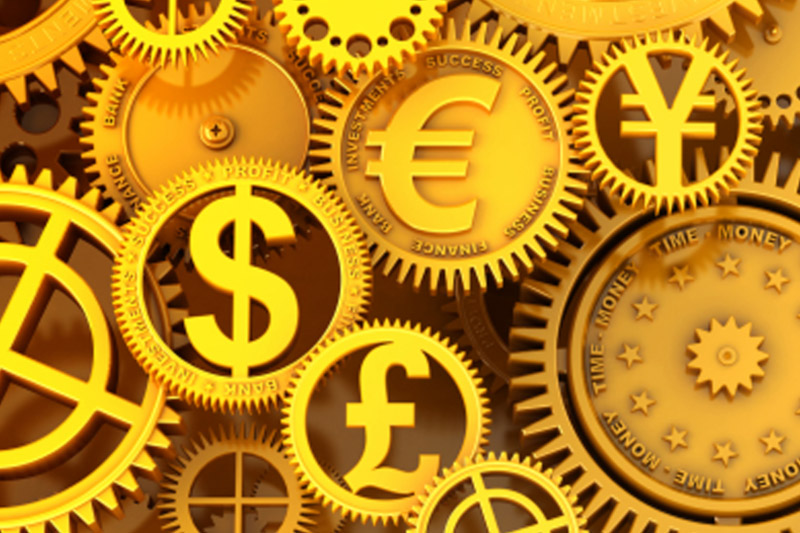Investing.com - The euro was steady against its global counterparts on Thursday, as guarded hopes that Greece is moving closer to an agreement needed to secure a second bailout lent support to riskier assets.
During European late morning trade, the euro was slightly higher against the U.S. dollar, with EUR/USD adding 0.14% to hit 1.3278.
Following talks on Wednesday, Greek Prime Minister Lucas Papademos said political leaders had reached an agreement in principle on austerity measures required for the country to secure its next aid package, but the issue of proposed pension cuts was unresolved.
Mr. Papademos said discussions on the issue with international lenders would continue, in the hope of reaching an agreement ahead of a meeting of euro zone finance ministers later Thursday.
Investors were also looking ahead to the European Central Bank’s policy meeting, amid expectations that the bank could flag a possible rate cut next month.
But the euro dipped against the pound, with EUR/GBP inching down 0.02% to hit 0.8380.
In the U.K., official data showed that manufacturing production rose significantly more-than-expected in December, increasing for the first time in three months, while industrial production also rose more-than-expected.
A separate report showed that the U.K. trade deficit narrowed more-than-expected in January, contracting to GBP7.1 billion, from an upwardly revised GBP8.9 billion the previous month.
Meanwhile, the Bank of England was widely expected to implement a further GBP50 billion of quantitative easing at its policy setting meeting later in the day.
The single currency was higher against the yen and was almost unchanged against the Swiss franc, with EUR/JPY adding 0.27% to hit 102.44 and EUR/CHF inching up 0.03% to hit 1.2103.
A report earlier showed that Switzerland's consumer climate index improved slightly more-than-expected in January.
Elsewhere, the euro continued to struggle close to recent record lows against the Australian and New Zealand dollars, with EUR/AUD up 0.01% to hit 1.2281 and EUR/NZD slipping 0.14% to hit 1.5868.
The New Zealand dollar came under pressure earlier in the session after official data showed that the number of people employed rose 0.1% to 2.221 million in the fourth quarter, missing expectations for a 0.4% increase.
However, the data showed that New Zealand's unemployment rate fell to a 21-month low of 6.3% on a sharp rise in the number of part-time workers.
The euro was almost unchanged against the Canadian dollar, with EUR/CAD easing up 0.02% to hit 1.3209.
Later in the day, the U.S. was to produce government data on initial jobless claims.
During European late morning trade, the euro was slightly higher against the U.S. dollar, with EUR/USD adding 0.14% to hit 1.3278.
Following talks on Wednesday, Greek Prime Minister Lucas Papademos said political leaders had reached an agreement in principle on austerity measures required for the country to secure its next aid package, but the issue of proposed pension cuts was unresolved.
Mr. Papademos said discussions on the issue with international lenders would continue, in the hope of reaching an agreement ahead of a meeting of euro zone finance ministers later Thursday.
Investors were also looking ahead to the European Central Bank’s policy meeting, amid expectations that the bank could flag a possible rate cut next month.
But the euro dipped against the pound, with EUR/GBP inching down 0.02% to hit 0.8380.
In the U.K., official data showed that manufacturing production rose significantly more-than-expected in December, increasing for the first time in three months, while industrial production also rose more-than-expected.
A separate report showed that the U.K. trade deficit narrowed more-than-expected in January, contracting to GBP7.1 billion, from an upwardly revised GBP8.9 billion the previous month.
Meanwhile, the Bank of England was widely expected to implement a further GBP50 billion of quantitative easing at its policy setting meeting later in the day.
The single currency was higher against the yen and was almost unchanged against the Swiss franc, with EUR/JPY adding 0.27% to hit 102.44 and EUR/CHF inching up 0.03% to hit 1.2103.
A report earlier showed that Switzerland's consumer climate index improved slightly more-than-expected in January.
Elsewhere, the euro continued to struggle close to recent record lows against the Australian and New Zealand dollars, with EUR/AUD up 0.01% to hit 1.2281 and EUR/NZD slipping 0.14% to hit 1.5868.
The New Zealand dollar came under pressure earlier in the session after official data showed that the number of people employed rose 0.1% to 2.221 million in the fourth quarter, missing expectations for a 0.4% increase.
However, the data showed that New Zealand's unemployment rate fell to a 21-month low of 6.3% on a sharp rise in the number of part-time workers.
The euro was almost unchanged against the Canadian dollar, with EUR/CAD easing up 0.02% to hit 1.3209.
Later in the day, the U.S. was to produce government data on initial jobless claims.
